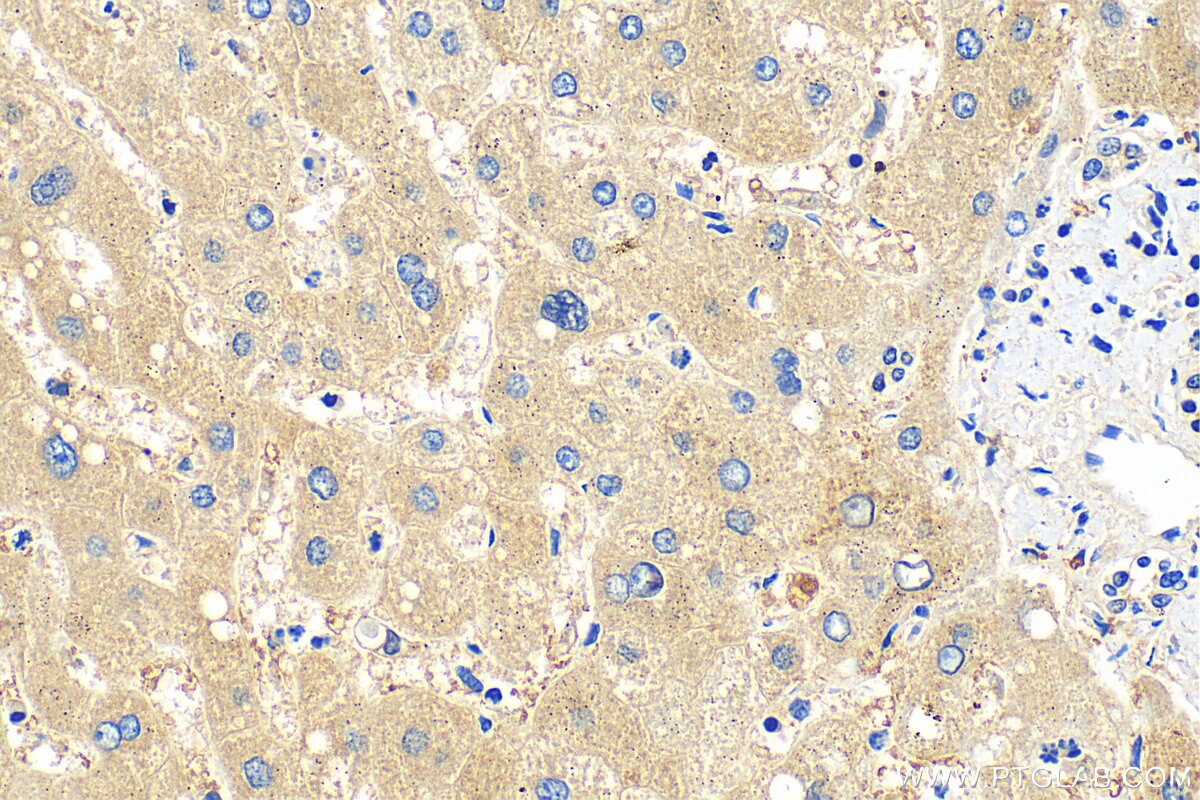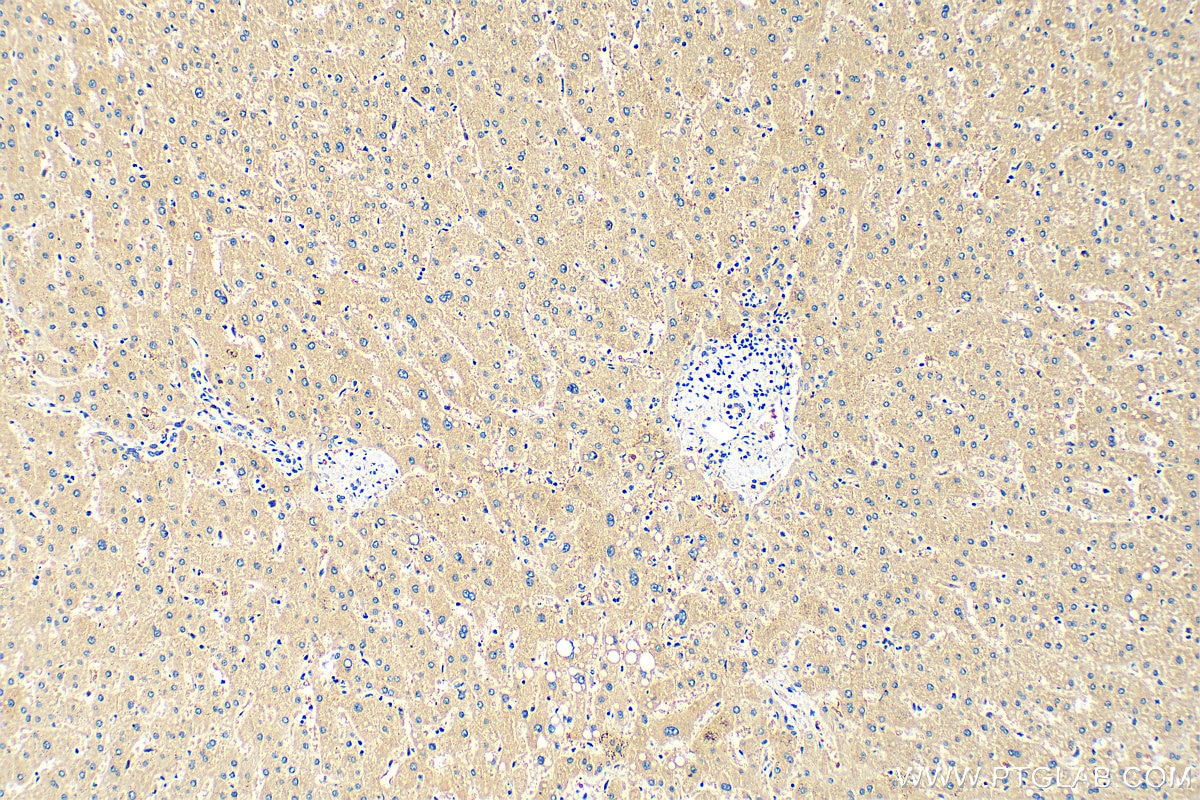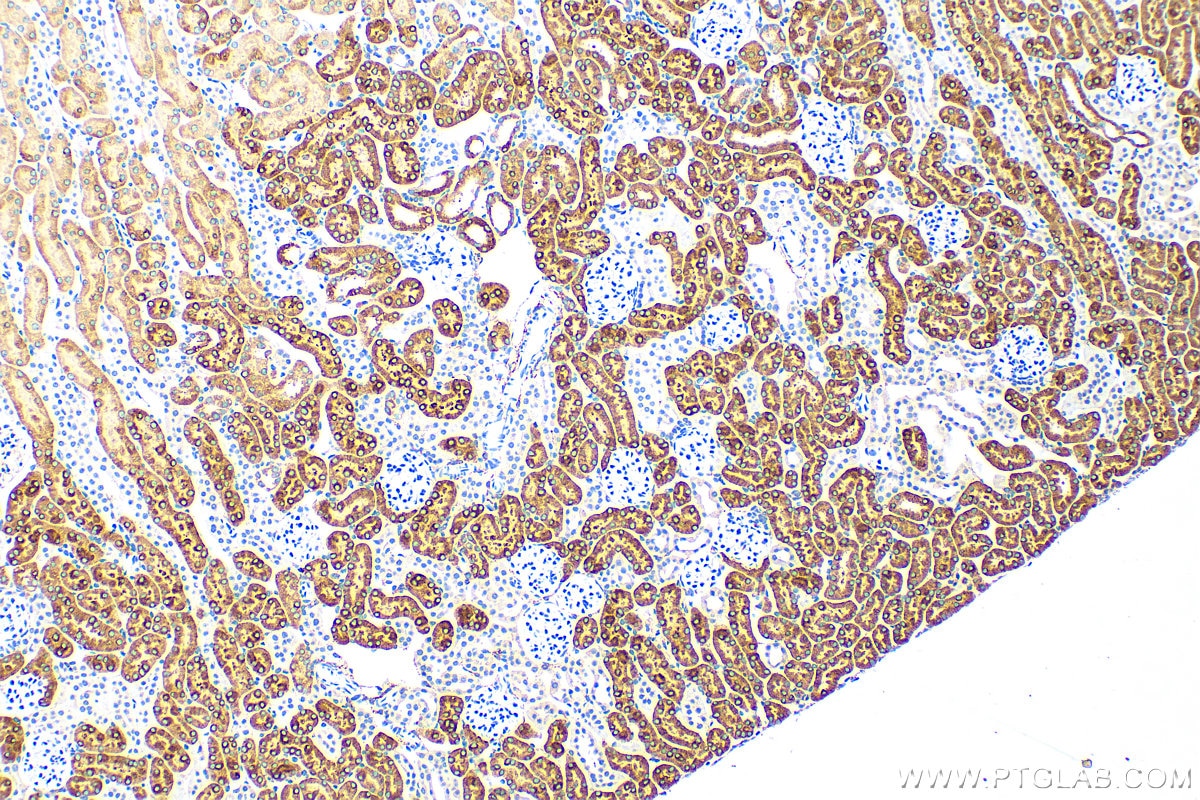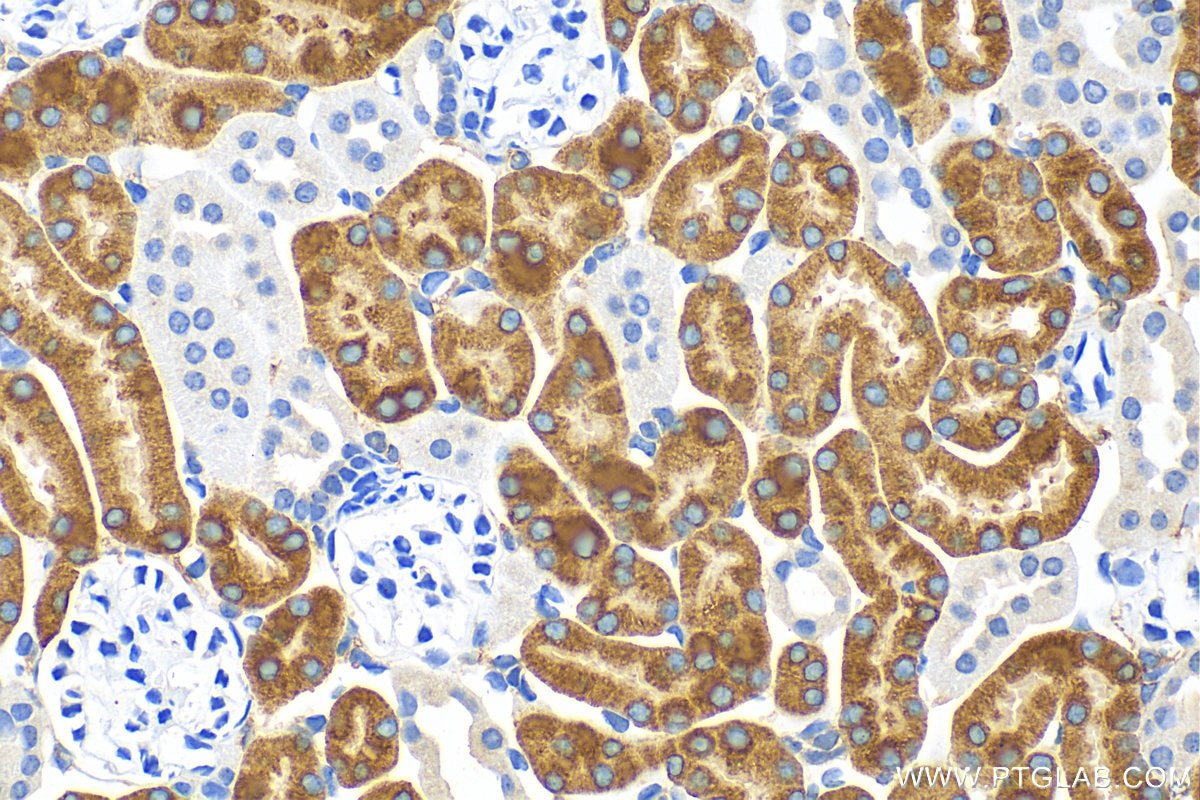Tested Applications
| Positive IHC detected in | human liver tissue, mouse kidney tissue Note: suggested antigen retrieval with TE buffer pH 9.0; (*) Alternatively, antigen retrieval may be performed with citrate buffer pH 6.0 |
Recommended dilution
| Application | Dilution |
|---|---|
| Immunohistochemistry (IHC) | IHC : 1:250-1:1000 |
| It is recommended that this reagent should be titrated in each testing system to obtain optimal results. | |
| Sample-dependent, Check data in validation data gallery. | |
Product Information
30977-1-AP targets FMO1 in IHC, ELISA applications and shows reactivity with human, mouse samples.
| Tested Reactivity | human, mouse |
| Host / Isotype | Rabbit / IgG |
| Class | Polyclonal |
| Type | Antibody |
| Immunogen | FMO1 fusion protein Ag34267 Predict reactive species |
| Full Name | flavin containing monooxygenase 1 |
| Calculated Molecular Weight | 60 kDa |
| GenBank Accession Number | NM_001282692 |
| Gene Symbol | FMO1 |
| Gene ID (NCBI) | 2326 |
| RRID | AB_3669802 |
| Conjugate | Unconjugated |
| Form | Liquid |
| Purification Method | Antigen affinity Purification |
| UNIPROT ID | Q01740 |
| Storage Buffer | PBS with 0.02% sodium azide and 50% glycerol , pH 7.3 |
| Storage Conditions | Store at -20°C. Stable for one year after shipment. Aliquoting is unnecessary for -20oC storage. 20ul sizes contain 0.1% BSA. |
Background Information
Flavin-containing monooxygenase 1 (FMO1) belongs to the FMO family. FMO1 is an enzyme that catalyzes the oxygenation of a series of sulfur-containing and nitrogen-containing substrates, and thus is involved in a series of drugs and xenobiotics metabolism. FMO1 can regulate PPAR-α and mediate metabolic processes. FMO1 is expressed at relatively high levels in human fetal liver and also represents the major FMO enzyme in the adult human and rabbit intestine and kidney (PMID: 11809920, 30757917, 37553313). Human FMO1 has 2 isoforms with the molecular weights of 53 kDa and 60 kDa.
Protocols
| Product Specific Protocols | |
|---|---|
| IHC protocol for FMO1 antibody 30977-1-AP | Download protocol |
| Standard Protocols | |
|---|---|
| Click here to view our Standard Protocols |









